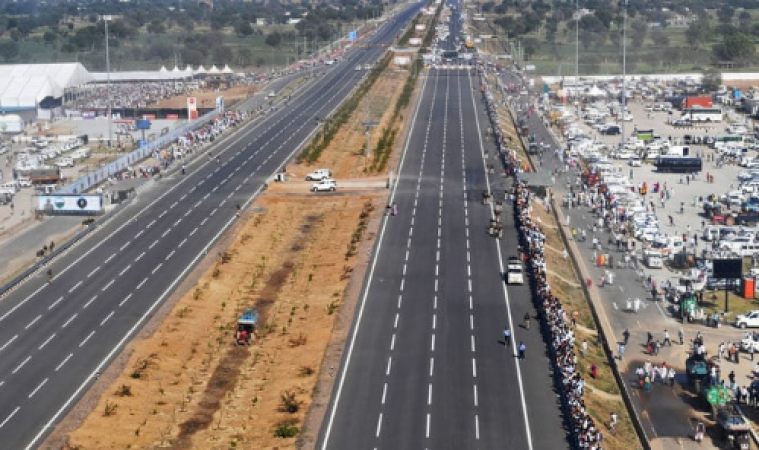
New Delhi: The first phase of India's longest expressway, which connects New Delhi and Mumbai, was officially opened on Sunday as part of a concerted infrastructure push by the country to catch up to geopolitical rival China.
The $13 billion ambitious project will eventually cut the distance by road between the two largest cities in the nation in half, to 12 hours.
India's infrastructure is decades behind that of its northern neighbor, despite the fact that it has the world's fastest-growing major economy and will soon be acknowledged as its most populous country.
Also Read: Man accused of blasphemy is lynched by a mob in Pakistan
Welcoming to the 1,386-kilometer-long Delhi-Vadodara-Mumbai Expressway, it was announced over one of the new four-lane carriageways.
The 246-kilometer first stage, which links the capital with the tourist destination of Jaipur in Rajasthan, was officially opened by Prime Minister Narendra Modi on Sunday.
"Such investments in railways, highways, subway lines, and airports are a key to pushing the country's growth rate, attracting more investments, and creating new jobs," he said, calling it a "sign of developing India."
Since a deadly military conflict on their Ladakh border in 2020, the third-largest economy in Asia has redoubled efforts to build up its own economic capacity and decouple itself from an assertive China's supply chains.
Also Read: US jets down four objects in eight days, a record for a peaceful nation
Many important projects have been accelerated by a wary New Delhi, and this month, Modi's administration announced an unprecedented 33 percent increase in infrastructure spending.
At least a dozen significant railway, road, expressway, and port projects are anticipated to be inaugurated by the Indian prime minister in the upcoming months.
With 1.3 million employees and one of the largest rail networks in the world, India needs to invest heavily in both track and rolling stock. To do this, the government is looking to private investors for funding.
Beijing has invested hundreds of billions of dollars in infrastructure over many years, and as a result, China now has the largest high-speed rail network in the world, a comprehensive network of highways, and gleaming airports.
The construction of India's first high-speed rail line, a $13 billion Japanese-funded undertaking connecting Mumbai and Ahmedabad, is still ongoing but has been hampered by delays in land acquisition and other administrative processes.
Also Read: 'Bird flu increased tension in America...', will it be a disaster for humans too?
According to Harsh V. Pant, a professor at King's College London, policymakers in India "feel that it is in a geopolitical and geoeconomic sweet spot that needs to be leveraged with higher infrastructure investments to make it an even more lucrative and attractive economy" as a result of China "losing some of its luster."
India still has a lot to do to catch up to China in terms of infrastructure development and economic growth because China's started a few decades before (India's) did.